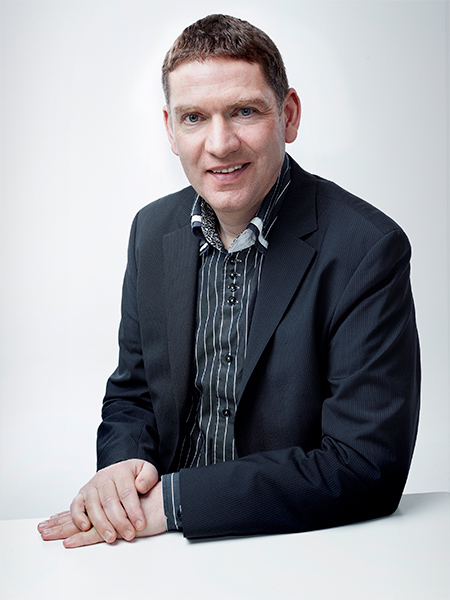Jean-François Mojon, head of Chronode, has been involved in the design and manufacture of dozens of watches. The former technical director of IWC shares some of his recent projects, particularly those he has done with Cyrus.
How are Chronode and Cyrus connected?
The link has existed since 2011, by virtue of our shared financial partner. That means we’re connected but independent. Chronode has complete autonomy in terms of how we work with third-party clients, but we have a special relationship with Cyrus.

How does your collaboration with Cyrus work?
We’re involved from the very beginning of the design and development process. And these are all very specific pieces. We take responsibility for the whole product, we deliver a complete watch. That means we work directly with the designers on the whole of the external casing of the watch. These are products that we don’t make every day; they require specific solutions and have structural demands that we have to re-evaluate each time. We like a challenge, we thrive on the unknown, and this brand offers us that dynamic. There’s really nothing standard about it.
Can you tell us about the work you have recently done for Cyrus?
The 2019 launch is an evolution of the Klepcys Tourbillon Vertical, in a skeletonised version. The main development is in terms of the movement. We skeletonised it, which meant redesigning and manufacturing around fifteen new components from scratch. We also enhanced the finish of many other parts, particularly those made of steel. We had to take the finishes further, because some of them are more exposed. We also did some work on the hands, which now have a more three-dimensional volume. Before, they had to fit with the dial, but now that’s gone they have more freedom of expression. However, the design of the big central arch remains unchanged.

It’s very rare to see a vertical tourbillon. How did that come about?
This is the first time we’ve put a vertical tourbillon in a central position, with a movement articulated entirely around it. Previous approaches have been to create an entirely vertical movement, or to put a vertical tourbillon on one side. By placing it in the centre, it gives the watch a symmetry that is part of Cyrus’s identity. The brand already uses two crowns, positioned either side of the case in the Klepcys collection, and here we also have retrograde hands on each side of the dial.
What are the advantages of a vertical tourbillon?
The tourbillon was designed for pocket watches, which were worn in a vertical position. The tourbillon helped to average out the errors that occurred. When the tourbillon is flat, it no longer has any effect. In the case of a wristwatch, we noted that the typical position is more horizontal than vertical, so for it to make any sense the tourbillon ought to be in a vertical position. But these considerations of accuracy aren’t the only attraction of a tourbillon. A tourbillon is a symbol of horological mastery and, in this particular project, it represents an aesthetic goal. It spans the entire movement, it’s visible from all sides, and it gives volume to the domed crystal. Its position determines an entire aesthetic, a completely different approach. It has given us new possibilities for expression.
Did this approach present any difficulties in construction?
The construction didn’t generate any major surprises. The real issue lies in rotating the tourbillon 90 degrees. It is close to the cage, which means that torque is weak. Any loss of torque in this area has a direct effect on the escapement. There are other aspects too: if the balance wheel has any flat spots, you won’t see them, but from the side you’ll see it waver like a wheel that’s out of true, which is unacceptable. We asked our escapement supplier, E2O, to revise their tolerances with this in mind.
What kind of developments do your clients ask for these days? Are they looking for something simple, or more complex?
Chronode receives many requests for complex developments. A project like the Klepcys Vertical Tourbillon is only possible when the brand behind it is willing to commit to something unusual and polarising. You have to be quite brave. There aren’t many watch companies that have the freedom of action to make products like this. In recent years, people have become more cautious. We’ve been asked to make more sensible products, more in line with watchmaking tradition, not so extreme as this. Today, technical developments are coming back. They’re being expressed in very different ways, and once again we’re being approached to undertake ambitious projects. Independent brands are asking us to translate what makes them different, to help them stand out from the crowd. To do that we have to stray from the beaten track. That’s our domain. We have produced many different display interpretations, so Cyrus’s Vertical Tourbillon is within our scope. It’s like the moon phase display of the Hermès Arceau L’Heure de la Lune: it’s not a revolution in terms of function, but it’s a challenge, and that’s what we love.

Do these complex projects originate from your client brands, or directly from you?
For the last three or four years we have been presented more and more ideas ourselves. We are increasingly active in making proposals, and this represents half of our activity. The aim is for the client to make it theirs, and develop it. We just make suggestions, and adapt to what the client wants. It’s this process of dynamic exchange that determines a project’s success.





